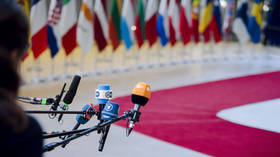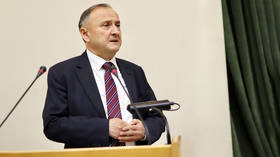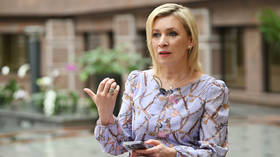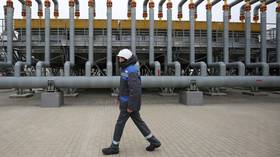The eco-warriors’ anti-growth agenda is a deadly pandemic in its own right, and WWF is just using Covid-19 to push its green goals
A new report from the environmental campaigning organization WWF is full of the usual melodramatic eco-disaster warnings – but it’s akin to a propaganda document rather than a serious study.
You know things must be returning to normal when the greens return to push their favorite anti-development agendas, albeit using coronavirus as cover.
WWF, a leading environmental and conservation charity, published a new report this week, “Covid-19: Urgent Call to Protect People and Nature”. Its central claim is that pathogens are increasingly being passed from animals to human beings. The “zoonotic” diseases that have resulted from such transfers include not just Covid-19, but a host of previously deadly diseases, from Spanish flu a century ago to AIDS, SARS, MERS and more.
In truth, this looks like a case of environmentalists feeling left out and attempting to grab some attention. It seems an age ago that we were all supposed to listen patiently to Greta Thunberg telling us all to panic about climate change. Then along came the pandemic and the environmentalists were left jealous – green with envy, as it were – as they were widely ignored.
While the much-promised eco-disaster never seems to arrive, coronavirus is a problem that is viewed as a serious and immediate threat by billions of people. The response of most governments facing a national epidemic has been to institute a lockdown. But it was this response that was responsible for many of the worst aspects of the crisis.
Unable to scare the hell out of us about the world being a bit warmer in a few decades’ time, environmentalists are now trying to insert themselves into the discussion about the pandemic. They’ve turned to blaming modern agricultural methods and the opening up of forest land to economic activity for the leap of diseases from animals to humans.
The report, which is more of an attractively illustrated propaganda document than a rigorous study, makes some odd claims. Covid-19 is described as an “unprecedented global health crisis,” for instance. The death toll is certainly alarming, at around 450,000 worldwide, but it may not even reach the “normal” annual death toll from endemic diseases such as malaria and tuberculosis, which each kill about a million people per year.
And Covid-19 certainly pales into comparison next to the Spanish flu of 1918–19, for which the total deaths are estimated to have been anything from 20 million to 50 million. The coronavirus death toll also looks to be considerably lower as a proportion of the world’s population (now 7.8 billion) than the other major flu outbreaks of the 20th century, in 1957 (two million dead out of 2.9 billion people) or 1968–69 (one million dead out of 3.5 billion people).
If the claim of an unprecedented health crisis is wide of the mark, other statements in the report are equally melodramatic. The report suggests that humanity’s relationship with nature is “broken”. But what it mainly complains about is the way forests are being cut down to allow open land for agriculture – much the same as happened in now-developed countries in the past. Why should developing countries today be denied a means of economic growth that was deployed by European countries in the past?
As it happens, total forest cover around the world has been pretty stable for decades. Data compiled by the World Bank suggests the total area of land covered by forest worldwide has fallen from 31.6 per cent in 1990 to 30.7 per cent in 2016 – a fall of less than one percentage point in 26 years.
While land is cleared in the developing world, more trees are being planted in richer countries, and secondary forests are shooting up as people desert farmland for cities in the developing world. Of course, these new forests don’t yet boast the biodiversity of the forests in tropical regions, but loss of trees wouldn’t appear to be a massive problem in and of itself.
Another area of concern for WWF is that expanding human populations are more likely to interact with wild animals. But, equally, the industrial agriculture that WWF despises means more and more of us can be kept away from animals. The poor, who have to be self-reliant, often keep chickens or pigs. These animals have been implicated in spreading disease to humans, as illustrated in past outbreaks of “bird” flu and “swine” flu. When countries get richer, fewer people are involved in food production, so that close relationship between humans and animals is much less common.
It’s true that eating wild animals – either through necessity or as a delicacy – presents an increased risk of zoonotic disease. So, the report makes the suggestion that providing safe alternatives for poor people would be a good idea. The international trade in wild animals is a bad idea, if one assumes this point of view, and few of us would object to stricter controls on that trade, if it helped to avoid another pandemic. But most of the exotic meat in those Chinese “wet” markets is actually farmed, not imported.
It’s surely feasible to make such farms safer. Banning all trade in exotic meat might actually increase the risk, since it would encourage unregulated, black-market production. Moreover, some of those pathogenic leaps from animals to humans took place a long time ago. It’s now thought, for example, that HIV jumped from chimpanzees to humans in the 1920s, in what is now the Democratic Republic of the Congo. It took the combination of global travel, a change in sexual mores, and intravenous drug use to enable its spread in the human population. This is not simply a contemporary problem.
In the case of Covid-19, the original suggestion that the disease arose in a “wet” market in Wuhan is now thought unlikely. Current thinking is that it’s more likely that it was brought to the market, a place thronging with people, by someone who already had the disease. There is still much to learn about how this disease was spread to humans, other than it almost certainly originated in bats. But the jury is out on whether eating exotic meat is really to blame this time.
The bottom line is that, if you want people to be able to buy safely produced food, they need to be lifted out of poverty and beyond subsistence. That requires economic development – something the WWF report is implicitly attacking.
What’s more, some of the things greens now love are themselves responsible for spreading disease. Cities have been enormously important in raising living standards. Greens love them, however, because they crowd people into smaller spaces away from nature. Environmentalists hate urban spread and suburbs. But it’s precisely in densely packed populations that diseases can spread quickly.
For environmental organizations such as the WWF, this pandemic is another opportunity to condemn economic development – the very thing that has transformed the lives of billions of people. Rather than rein in that development, as the scaremongers demand, we need much, much more of it. We need to lift billions more people out of poverty. The anti-growth agenda of eco-warriors has become a deadly pandemic in its own right.
The statements, views and opinions expressed in this column are solely those of the author and do not necessarily represent those of RT.













